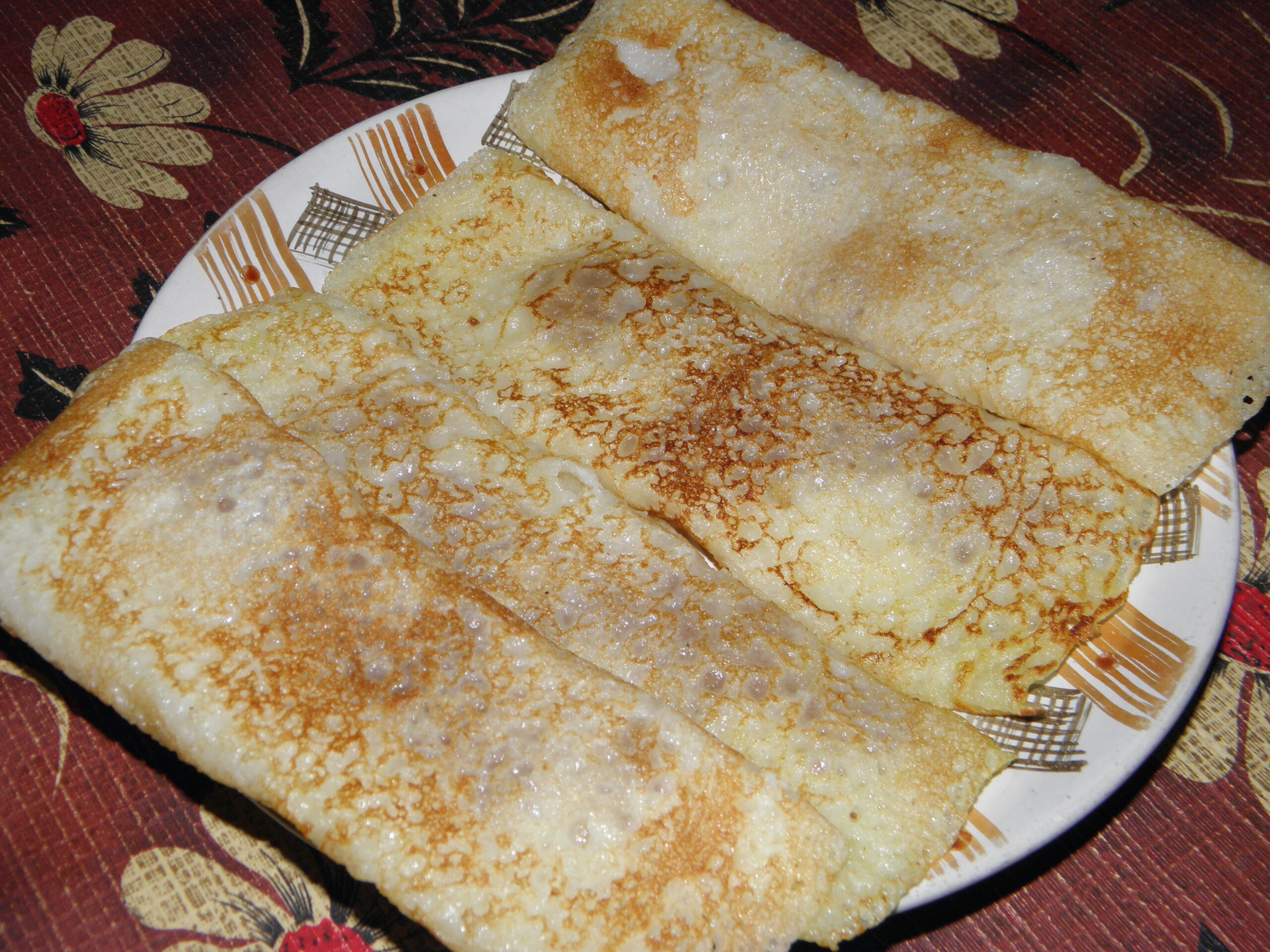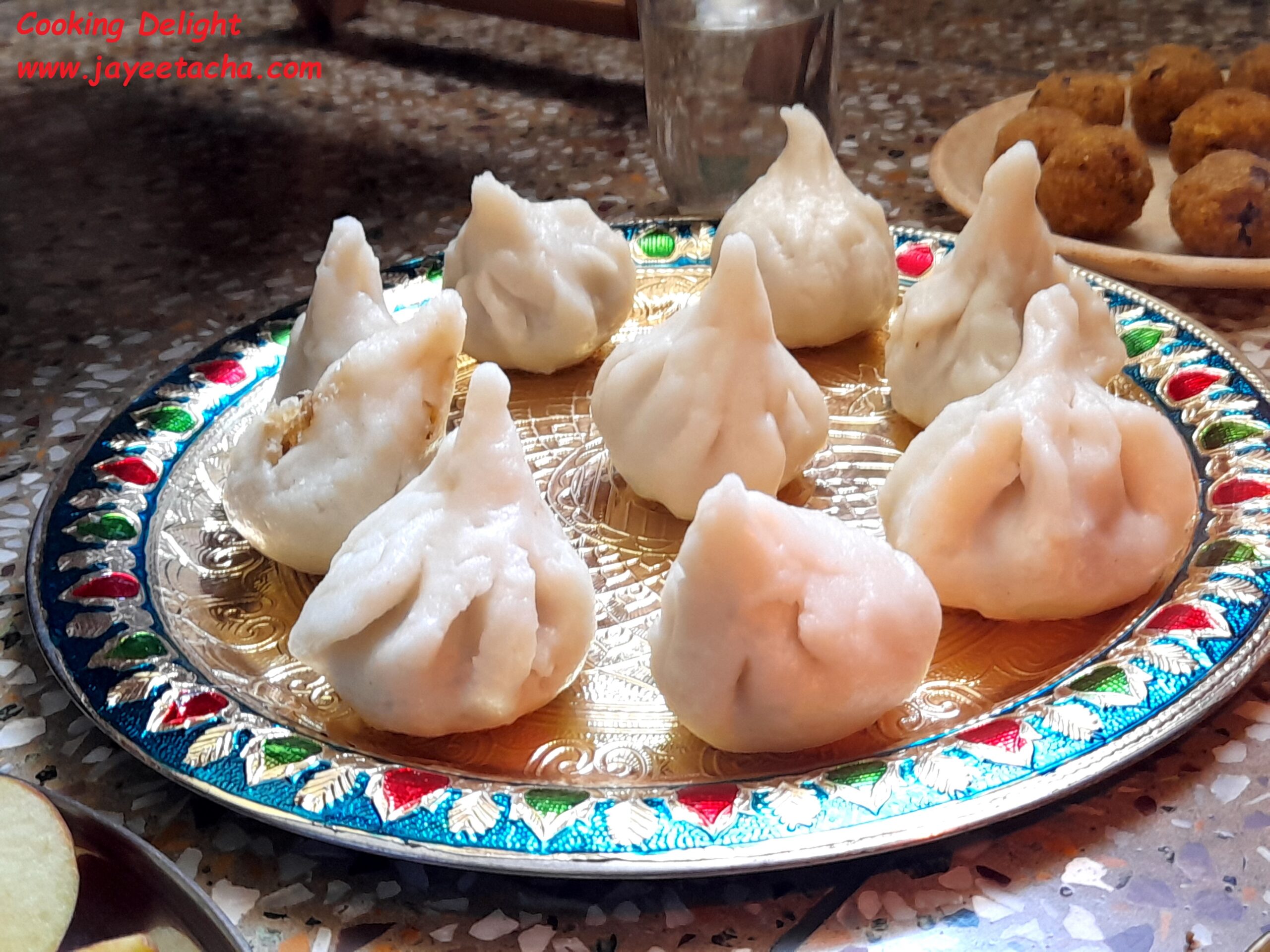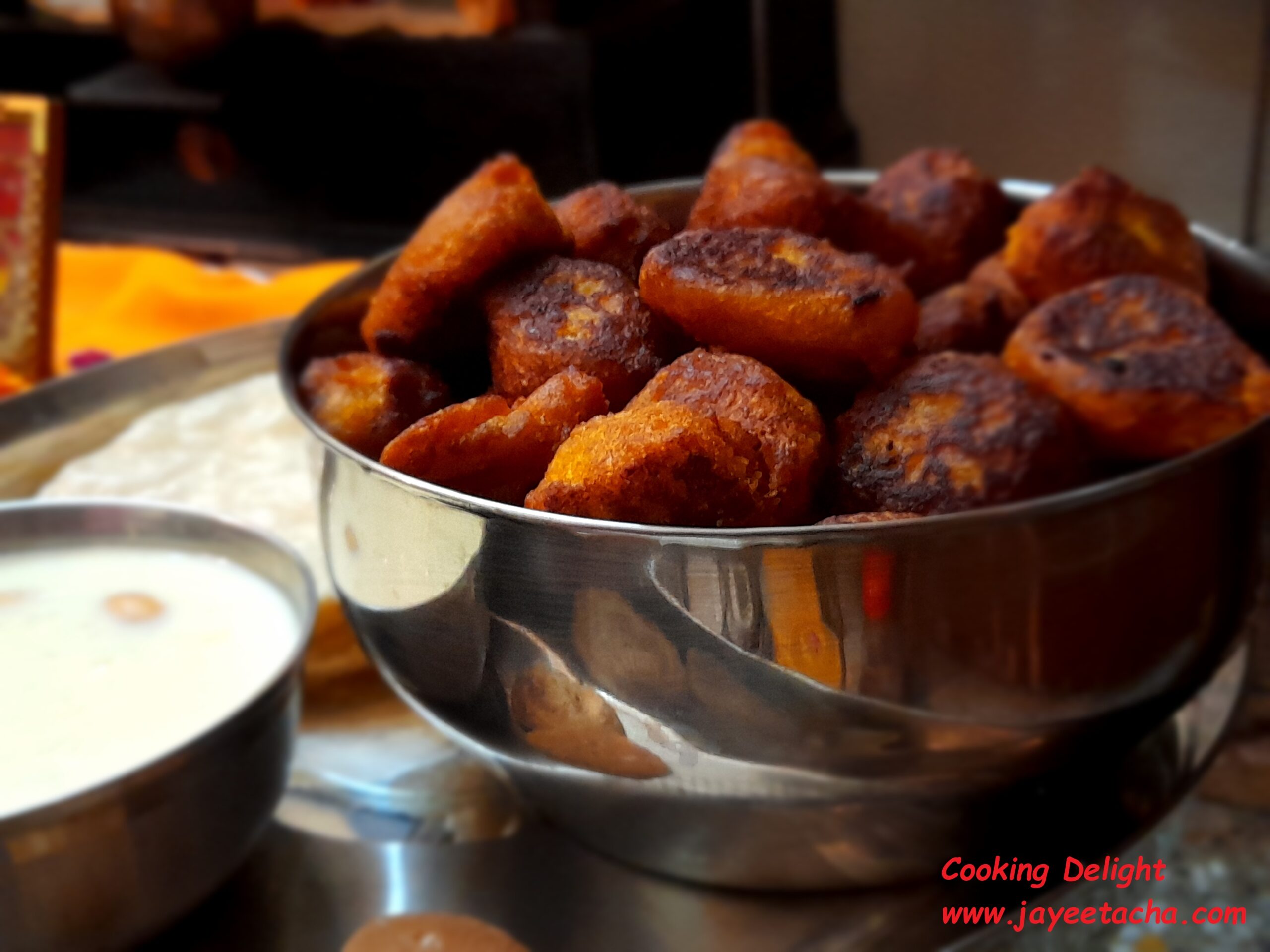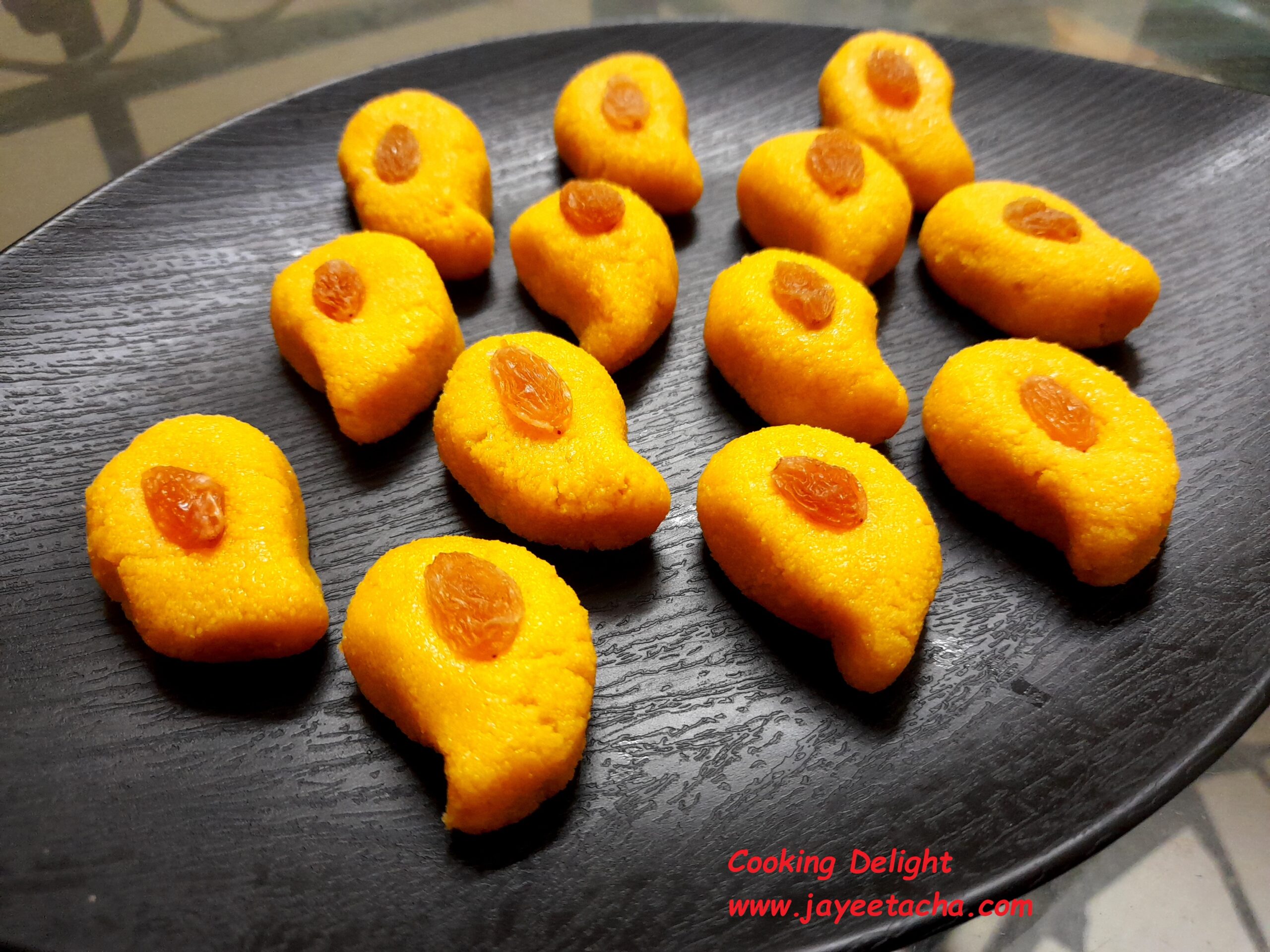Makar Sankranti is a harvest festival, celebrated all over India. In West Bengal it is known as Poush Sankranti, got the name after the Bengali month Poush, and celebrated as Poush Parbon. The last day of the month Poush, in English 14th or 15th January, is considered as the beginning of an auspicious phase. The day brings smile to the faces of farmers as they earn some money selling off the crops and at last find leisure time after the hard days harvesting on field.
In Bengali households different traditional sweet and savoury dishes, known as Pithe and Puli, are prepared out of rice powder or flour, coconut and date palm jaggery to celebrate this festival. Date (Khejur in Bengali) palm syrup in the form of Khejurer Gurh and Patali is an added attraction during winter in Bengal. No one could afford to miss the Rasgulla and Sandesh made with Kjejurer Gurh in winter.
Among various kinds of Pithe & Puli, I prepared just three named as Sedhyo Pithe (Steamed Pithe), Dudh Puli and Patishapta. They all are sweet dishes and immensely enjoyable. I am sharing with you three recipes together, which are quite simple and requires few handful ingredients.



Ingredients for Sedho Pithe & Dudh Puli :
- Rice flour – 250 gm. (I used Sedhyo Chal rice flour)
- Coconut (grated) – 1
- Semi-solid date palm jaggery (Khejurer Gur) – 250 gm.
- Milk – 3 cups
Ingredients for Patishapta (8-10 pieces) :
- Plain flour – ½ cup
- Semolina – ½ cup
- Rice flour – 2 tbspoon
- Sugar – 1 tbspoon
- Milk – 1½ – 2 cups
- Oil to grease
Procedure for making Sedho Pithe & Dudh Puli :
Mix grated coconut with 200 gm. of jaggery in a kadai or frying pan.
Put the kadai on low-medium flame and cook the mixture until raw flavor of coconut goes away and it is well mingled with jaggery. Do not cook the mixture for long as in this case binding consistency is not required. This coconut mixture is called ‘Chei’ in Bengali and used as stuffing for Pithe, Puli & Patishapta.

Reserve 1/3 of this coconut mixture for Patishapta and use rest for Pithe & Puli.
Now boil 3 cups (small) of water in a kadai. Add the rice flour into it and stir with a wooden spoon till a soft and sticky dough is formed.
Transfer the dough into a plate/bowl and let it come to room temperature.

Grease your hand with little oil.
Divide the dough into 20 equal parts and make smooth balls out of them.
Flatten each ball evenly by your fingers to make a hole in the ball, put 1-2 teaspoon full of the coconut filling, close from all sides and give a half circular shape or ‘puli’ shape, as shown in the picture.


Preparing Sedhyo Pithe needs a steam chamber. To make that kind of chamber boil water in a large pan. Put a slotted dish, covered with a thin cotton cloth, over the boiling water. Maintain at least 1 inch gap between the water level and the dish surface. Now place 8 or 10 of the prepared ‘pulis’ over the cloth, cover them with rest and then close the dish with a lid, steam for 10-15 minutes.

Transfer them on a plate and serve hot with ‘Nolen Gur’ or date palm syrup.

For preparing Dudh Puli boil 3 cups of milk in a kadai over medium heat. As the milk starts boiling add remaining date palm jiggery and mix well. Then put the remaining pulis into it and cook for 8-10 minutes.

Transfer to a serving bowl and serve after reaching room temperature.

Procedure for making Patishapta :
Mix plain flour, semolina, rice flour and sugar in a bowl. Add milk to this mixture and prepare a lump free batter. Cover the bowl and leave the batter for at least 3 hours.
Now put a nonstick frying pan over low heat. Using a cotton ball or aubergine stem grease the pan with oil.
Using a medium size ladle pour the batter at the center of the pan (one ladle full at a time). Spread the batter a bit by lifting and rotating the pan with hand and give it a circular shape.
The colour of the batter will change as it gets cooked.
Then place 2 teaspoon of the coconut filling, arrange like a straight line, at the center or side of the circle.
Then fold 1/3 of the circle, starting from the edge closer to you at the center. Also wrap the other third from the far edge to the center. The folding procedure is same as of ‘Dosa’.


Repeat the procedure till the batter is finished.

Note :
- One can use homemade rice powder instead of rice flour. In that case soak the rice in water overnight, then spread it over a plat and let it dry. Then grind the rice to fine powder. Shedhyo Chal and Atop Chal are the preferable rice for making Pithe.
- If date palm jaggery is not available then sugar can be used instead of that to make the coconut filling.
- Patishapta is also very delicious with Sandesh as stuffing.
- Adjust the sweetness of the dishes according to your preference.






My Kitchen Moments
Happy New Year dear 🙂
Jayeeta
Wish you a very happy and prosperous new year……. 🙂
My Kitchen Moments
In Kerala, we also make this Patishapta but we call it as Madakkusan!
Jayeeta
Great to know another name for Patishapta 🙂 …….Do you also make this for Makar Sankranti ??????
My Kitchen Moments
No.. We usually make Madakkusan as an evening snack along with tea
Chitra Jagadish
Hi Jay, nice to see you back with wonderful post….happy new year dear… hope all are doing good back home…. keep in touch…
Jayeeta
Thanks dear 🙂 …….I am fine…….wish you a very happy and prosperous new year…….. 🙂
Chitra Jagadish
Thank you Jay… 🙂
Mung daler bhaja puli | Cooking Delight
[…] in Bengal. Last year also I posted few recipes on the occasion of Makar Sankranti, such as Celebrating Makar Sankranti (Poush Parbon) with Sedhyo Pithe, Dudh Puli & Patishapta, however this year quite late I am. But that does not bar me from sharing this tempting recipe. […]
Rash Bora (Urad dal fritters in Sweet Syrup) – Makar Sankranti Recipe | Cooking Delight
[…] Sedhyo Pithe, Dudh Puli, Patishapta […]
Gokul Pithe – Makar Sankranti Recipe | Cooking Delight
[…] Sedhyo Pithe […]
Modak for Ganesh Chaturthi | Cooking Delight |
[…] of freshly grated coconut and sugarcane jaggery. The preparation instantly reminded me of ‘Sedhyo Pithe‘, a similar Bengali sweet, prepared in households during Makar […]